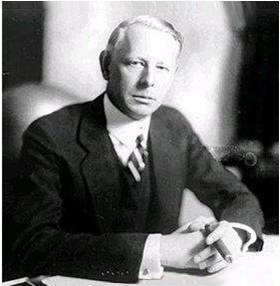Trading Strategy
Here are nine steps to developing a trading strategy:
Know what to trade
Knowing what you want helps clarify what you don't want.
The first step for any trader or investor is deciding what securities to trade. The smaller the group of securities you focus on, the more specialized knowledge you are likely to accumulate.
- What exchange or market?
- Types of securities?
- Sectors?
- What size stocks?
Types of Security
Common shares, ETFs, REITs, preference shares, convertibles, hybrids, notes, debentures, corporate bonds, municipal bonds (munis), government bonds, options, warrants, or futures. And, when it comes to futures, there are index futures; currencies; energy; grains and oilseeds; bonds and interest rates; metals; meats; and softs.
Sectors
Specialize in certain sectors — at one time I only traded Banks and REITs — exclude certain sectors, limit your exposure to any one sector, or trade them all?
Size
Large caps, mid-caps, small-caps, penny stocks or some other criteria based on size or liquidity.
A good start
A good start for a newcomer would be to select a single stock exchange and trade only large and mid-cap stocks (for example constituents of the S&P 500 or ASX 200), limiting exposure to no more than say 20% in any one sector. Most of these stocks are less volatile than their small cap or penny stock counterparts. They are closely monitored by exchange and investment houses and contain fewer traps for the unwary.
There are some traders who successfully trade a single stock or a handful of related stocks. There is nothing wrong with this but it does make position-sizing more difficult. If trading a small number of stocks, or a particular sector, you also need to consider co-variance — the tendency of stocks to rise and fall together.
Know what direction to trade
Are you going to short stocks or trade long only?
I find it difficult to trade profitably on the short side under normal market conditions. Some of the most successful traders (Jesse Livermore, Victor Sperandeo) have amassed fortunes shorting a bear market but you have to know what you are doing.

Livermore first became famous after the Panic of 1907 when he sold the market short as it crashed. He noticed conditions where a lack of capital existed to buy stock. Accordingly, he predicted that there would be a sharp drop in prices when many speculators were simultaneously forced to sell by margin calls and a lack of credit. With the lack of capital, there would be no buyers in sight to absorb the sold stock, further driving down prices.....[Wikipedia]

Victor Sperandeo as quoted by Jack Schwager in The New Market Wizards:
"The first major timing signal came on October 5 [1987] when I read Fed Chairman Greenspan's comment in the Wall Street Journal, in which he was quoted as saying that interest rates would become 'dangerously high' if inflation fears were to 'mushroom' in the financial markets......On October 15, Dow Theory gave a sell signal and I initiated my short position.
The straw that broke the camel's back was Secretary of State James Baker's dispute with Germany, in which he urged Germany to stimulate its economy. When Germany refused to cooperate, Baker made a weekend announcement that the United States was prepared to 'let the dollar slide'......On Monday morning I immediately added to my short position, even though the Dow Jones Index opened over 200 points lower."
Know when to trade
I don't know of any system that works under all market conditions. One of the worst mistakes is to attempt to trade the same system through both bull and bear markets.
The character of the market changes when bears are in control. Anxiety levels are a lot higher and panic spreads faster than overconfidence. Declines are a lot steeper in a bear market than advances in a bull market; rallies in a bear market are more tentative than corrections in a bull market; and, because the falls are steeper, bear markets tend to have a shorter duration.
Trade when the time is right. When it is not right, trade another system — or take some time off and go fishing (Livermore's favorite recreation).
Know how much capital to trade
Only trade with money you can afford to lose. If you have money set aside for an upcoming operation, or your kid's college fees, don't trade with it. The market makes a living out of punishing those with a cavalier attitude towards risk.
Investing, as opposed to trading or speculating, is quite another matter. But tailor your expectation of returns to match the risk you are prepared to take.
Leverage
Beware of leverage. Leverage is great when you have predictable returns. It can also deliver substantial tax advantages, given the right structure.
The downside of leverage is that it magnifies volatility — and the potential damage when you don't have predictable returns. Here is a quick example of risk and return:
Now, imagine if you are offered a CFD (contract for difference) with 90% leverage.
Know your costs
Brokerage and slippage are two important costs that you need to factor into your calculations. And the shorter the time frame that you trade, the higher your turnover, and the more important those two numbers become. When I started trading, brokerage on a buy or sell was as high as 100 basis points (or 1.0%) which forced one to take an extremely long-term view. Not necessarily a negative, in my case. Today, with electronic trading, you can find brokers who charge as little as 7 basis points (0.07%).
Slippage is as important as brokerage and occurs when a trade executes at a price other than the expected price. Stop losses may be executed at a worse rate than the trigger level because price is falling fast and liquidity is low — a common experience when market volatility is high.
Another instance is when markets gap up/down overnight. If you take signals on the close, you will frequently find that price moves overnight, so your execution in the morning is better or, more often, worse than the close of the night before.
Slippage also occurs when market orders are executed at worse than the expected price — when the spread alters. In a long trade, the Ask may increase. In a short trade, the Bid may fall. The larger the order, the more likely this is to occur — when there is insufficient stock available at the Bid or Ask.
Know what time frame to trade
Consider how much time you have to devote to trading. If you have a day job, it is advisable to trade longer time frames.
Also, consider your risk tolerance. The longer the time frame, the lower your brokerage and slippage costs as a percentage of capital. And the longer your time frame, the closer your actual return is likely to conform to your expected return, based on historic performance. Longer time frames tend to reduce random market noise. Small random movements tend to offset each other over time, revealing the underlying market trend.
Know yourself, as well. Some are stimulated by the intensity of short-term trading, while others find it stressful. Find the trading style that best suits your temperament.
Know how much to trade
Trade all your capital on a single position and one wrong call will wipe you out. Apply the 2 Percent Rule, risking only a small percentage of your capital on any individual position, and you are far more likely to withstand drawdowns.
Know how to trade
Your choice of trading style is related to the time frame you trade. Each trading style attempts to develop an edge — a favorable probability — by trading different trend attributes.
Long-term
Positions are mostly held for years.
- Value investing
- Trend-following
- Momentum
- Mean reversion
Medium-term
Positions are mostly held for several months.
- Momentum
- Swing trading
- Mean reversion
Short-term
Positions are mostly held for several weeks.
- Swing trading
- Mean reversion
- Pairs trading
Day trading
Positions are closed by the end of the day.
- Scalping
- Fading
- Pivot trading
- Pairs trading
High frequency trading (HFT)
This requires deep pockets. The investment in high-speed servers and connections can run into millions. Positions are held for milliseconds...... sometimes seconds, seldom minutes.
- Scalping
- Pairs trading
- Arbitrage
Know when to quit
Probably the most important step besides position-sizing (step #7). Knowing when to take profits and cut losses is crucial to profitability — more so than entering at the right time — for most systems.
The tighter you set your stop losses or exit signals, the more often you are likely to be whipsawed or shaken out of a position when you don't want to be. This is an immutable law. Like pulling on a piece of string: pull on one end and the other will follow. That has not stopped traders from spending hours and hours poring over their system, trying to maximize profits while reducing whipsaws. Whipsaws are unavoidable — like death and taxes.
Master trader Ed Seykota sums up the dilemma: To avoid whipsaw losses, stop trading.

Author: Colin Twiggs is a former investment banker with almost 40 years of experience in financial markets. He co-founded Incredible Charts and writes the popular Trading Diary and Patient Investor newsletters.
Using a top-down approach, Colin identifies key macro trends in the global economy before evaluating selected opportunities using a combination of fundamental and technical analysis.
Focusing on interest rates and financial market liquidity as primary drivers of the economic cycle, he warned of the 2008/2009 and 2020 bear markets well ahead of actual events.
He founded PVT Capital (AFSL No. 546090) in May 2023, which offers investment strategy and advice to wholesale clients.
